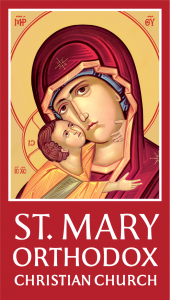The One Gospel
By Metropolitan Saba (Isper)
The origin of the word enjeel [“gospel,” in Arabic] is the Greek word evangelion, originally meaning “good news.” This word was associated with the messenger who bears the news of victory. It was customary for him to return immediately after the victory, in order to proclaim it to the people, and he would then prepare the ceremony of welcoming the returning king and army with laurel wreaths. The early Christians applied this word to the bearers of the “Good News” of the Lord Jesus Christ, as the happiest news for humanity—according to the saying of the angels to the shepherds, “Behold, I bring you good tidings of great joy, which shall be to all people … For unto you is born … a Savior, which is Christ the Lord” (Luke 2:10–11). Hence the books that speak of this “good news” bear this name. Their authors were also known as evangelists, and this became a Christian term, widespread in all languages.
The good news of Christ is one. Therefore, the gospel is one—the gospel of Jesus Christ, which is not limited to His teaching and miracles, but is connected to His very person and what He has achieved for the salvation of mankind.
This joyful gospel arrived in four forms. It was written by four of Jesus’ disciples, two of them (Matthew and John) from the Twelve, and two (Mark and Luke) from their disciples. In short, we speak of the Gospel of Matthew, Mark, Luke, or John, and by that we mean the proclamation of Christ as narrated by one of these four evangelists. There is only one gospel, not several, in Christianity. In order to avoid confusion and misunderstanding, many years ago the new, scientifically scrutinized editions began to use the phrase “the gospel as narrated by so-and-so,” or “according to so-and-so.”
Because the gospel is the proclamation of Christ—to whom be the glory—the four evangelists did not write detailed biography of Christ, but His gospel. Mark thus begins “the beginning of the gospel of Jesus Christ” (Mark 1:1), while Matthew starts with a genealogy that begins with Abraham and ends with Joseph, and then moves on to the birth of Jesus.
Many began, according to Luke the Evangelist, to write the teaching of Jesus Christ, after His resurrection and ascension to heaven (see Luke 1:1–2). In the world of literature, a book is usually attributed to the name of an important figure, in order to be spread and circulated. But the Church, with the Holy Spirit present in her, and based on precise criteria (which this article does not have room to address), distinguishes between authentic writings and those that are false or degenerate. It kept the four versions, known to Christians from ancient times until today, but rejected the rest.
The image of Christ, living and risen from the dead, played the most important role in the compilation of His words, sermons, miracles, and acts during His earthly life, before His crucifixion and death. After Pentecost, the disciples set out to preach the Risen Christ. Three key elements contributed to the compilation of the first versions of His good news.
The first element was preaching, part of which was addressed to the Jews, referring to Jesus “whom you crucified but God raised up, … and we are witnesses of these things” (Acts 4:10; 5:32). The one account addressed to the Gentiles was centered on the person of Christ the Savior, who came to us, died, and was resurrected. The second element is the Liturgy, which they began to hold at the Lord’s request, “Do this in remembrance of Me,” and which was an occasion to remember and honor what Christ did and said, even up to the words of the Last Supper. The third element was catechism, for which they were obliged to preach the new faith and thus to explain and recall all of the Lord’s teaching and works that they saw and bore witness to.
All these things were done because “we proclaim to you what we have seen and heard, so that you too may have communion with us” (1 John 1:3). Those who wrote were present witnesses, because “life has been manifested and we have seen it, and now we bear witness to it and proclaim eternal life to you” (1 John 1:2). In the words of the Apostle Peter, “We heard this voice coming from heaven, as we were with Him on the holy mountain” (2 Pet. 1:18). This writing was inspired by God, not by human motives, “for no prophecy whatsoever came by the will of man, but the Holy Spirit led some people to speak words from God” (2 Pet. 1:20).
Each of the four evangelists wrote the gospel of Christ, for the purpose of proclaiming Christ. This was done by divine inspiration, to reveal the image of Christ and His saving work and teaching more clearly, in greater detail and depth—as when photographs are taken of someone from several angles. Hence is the difference of each book from the others, and although the four books contain a variety of events, they are one, and although they contain many sayings, they are similar. Each of them presented the gospel of Christ in the best way for the hearers to understand, by the inspiration of God, so that it could reach them in its truth.
The evangelist Matthew, for example, who preached in Syria and addressed his book to the Jews, linked the events of Jesus’ life to the prophecies of the Old Testament prophets and quoted verses from their books, to show them that He was the promised Messiah. Mark, who preached to the pagans in Rome, did not mention these prophets, but translated every Hebrew word he had to use into Latin so that his readers could know its meaning. In His book, Matthew places Jesus’ teaching in an order that shows that Christ is the new Moses, who gives the perfect Law (on the mount), which abolishes the old incomplete law, focusing more on this fulfillment than on His teachings themselves (to Him be the glory). Mark, on the other hand, wrote more about Jesus’ deeds than about His teachings, because he addressed the power-loving Romans in order to show them the image of Christ as the most powerful God and to communicate that what Christ did was impossible for the gods they knew.
The ecclesiastical tradition chose a symbol specific to each gospel, taken from the images of the four creatures, which appear in the vision of the prophet Ezekiel. This is because the Church has found a relationship between each symbol and the content of each book. The symbol of Matthew the Evangelist is the likeness of a man, since he spoke so much of Christ as the Son of Man. Mark, who highlighted the power of Christ, was symbolized by the lion, while Luke, because of the many merciful teachings and deeds of Christ, was truly called the Gospel of Mercy, symbolized by the bull, which was offered as a sacrifice of mercy. John, who soared in the heavens of the divinity and incarnation of Christ, is symbolized by the eagle.
The first three books contain many identical events and sayings, so they are called the Synoptic Books, because biblical scholars have placed these events and sayings in parallel columns, in order to compare them. John, who wrote the divine gospel at the end of his days and died a hundred years old, saw no need to repeat what his predecessors had written. His book was distinguished in style and presentation and was called the spiritual gospel, although it highlighted the theology of the Incarnation as no one else had.
The four books richly show the dimensions of Christ’s person and gospel, as no single book could have. Therefore, from the outset, the Church refused to merge these four books into one comprehensive book. The theology revealed by each of the four evangelists in his book cannot survive if they are combined into one book.
You can meditate and be enriched by the person, role, teaching, and saving work of Christ, with immeasurable riches, based on these books you have, which thousands of millions of people have based their lives on before you. “Jesus is the same yesterday, today, and forever” (Heb. 13:8).




